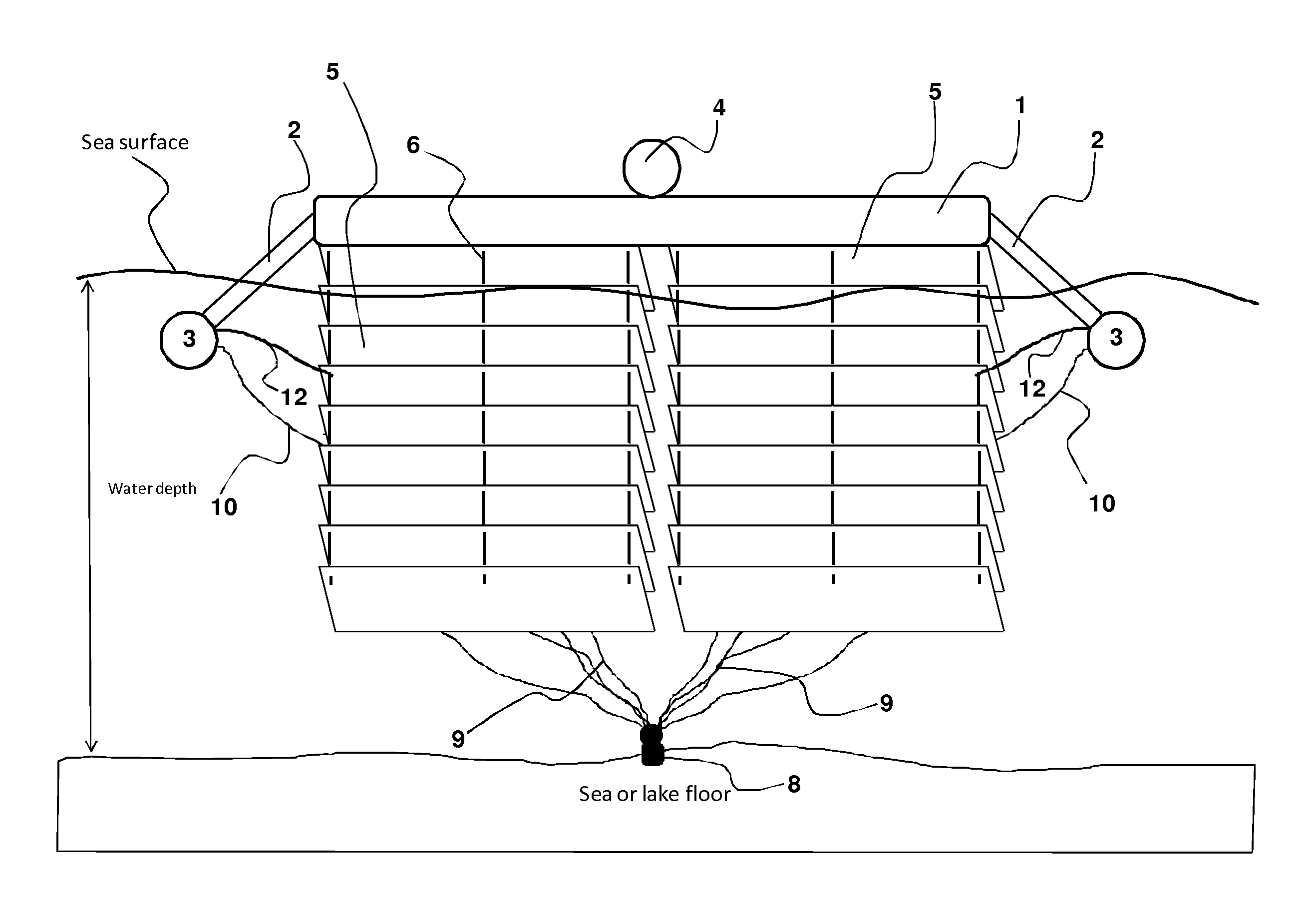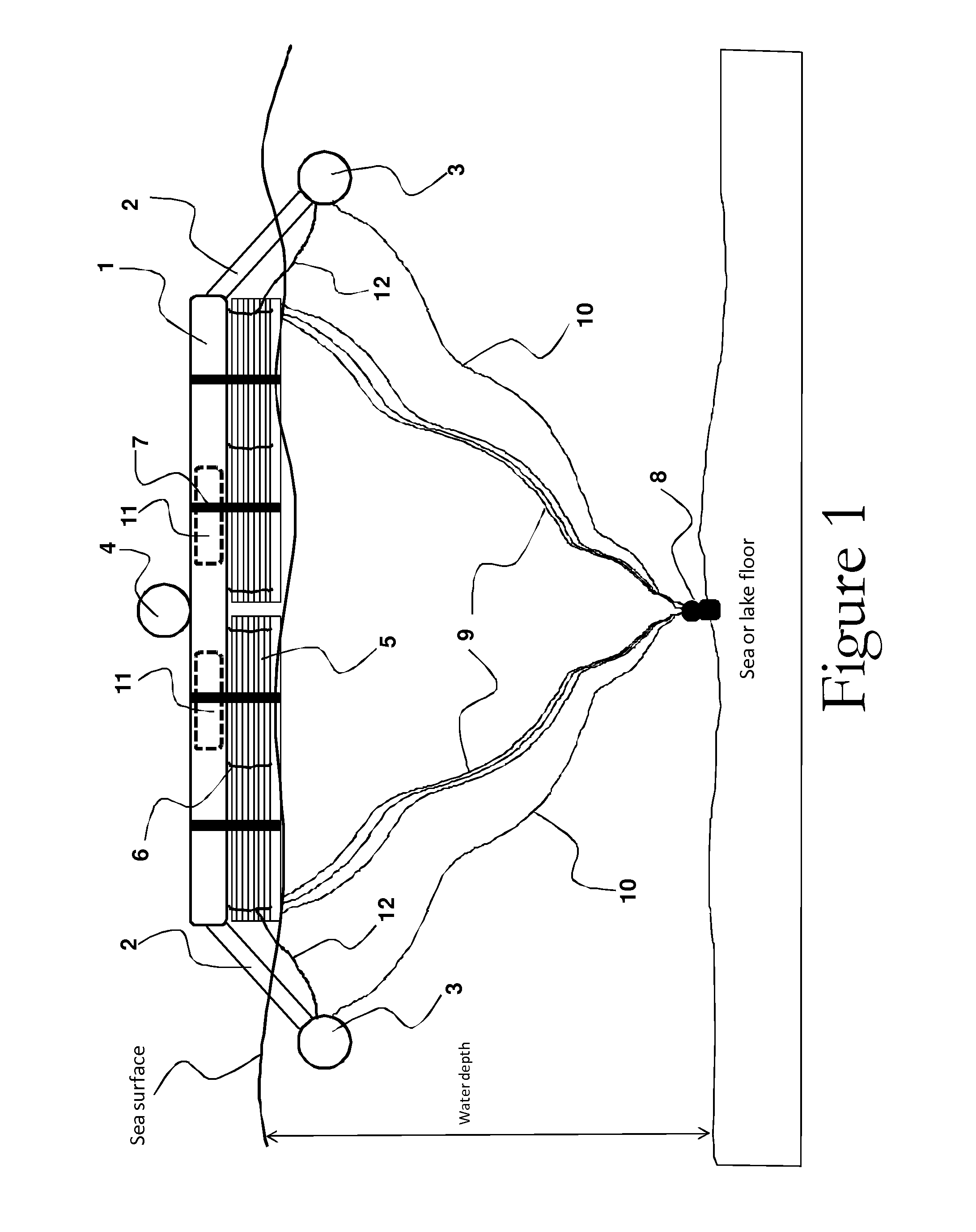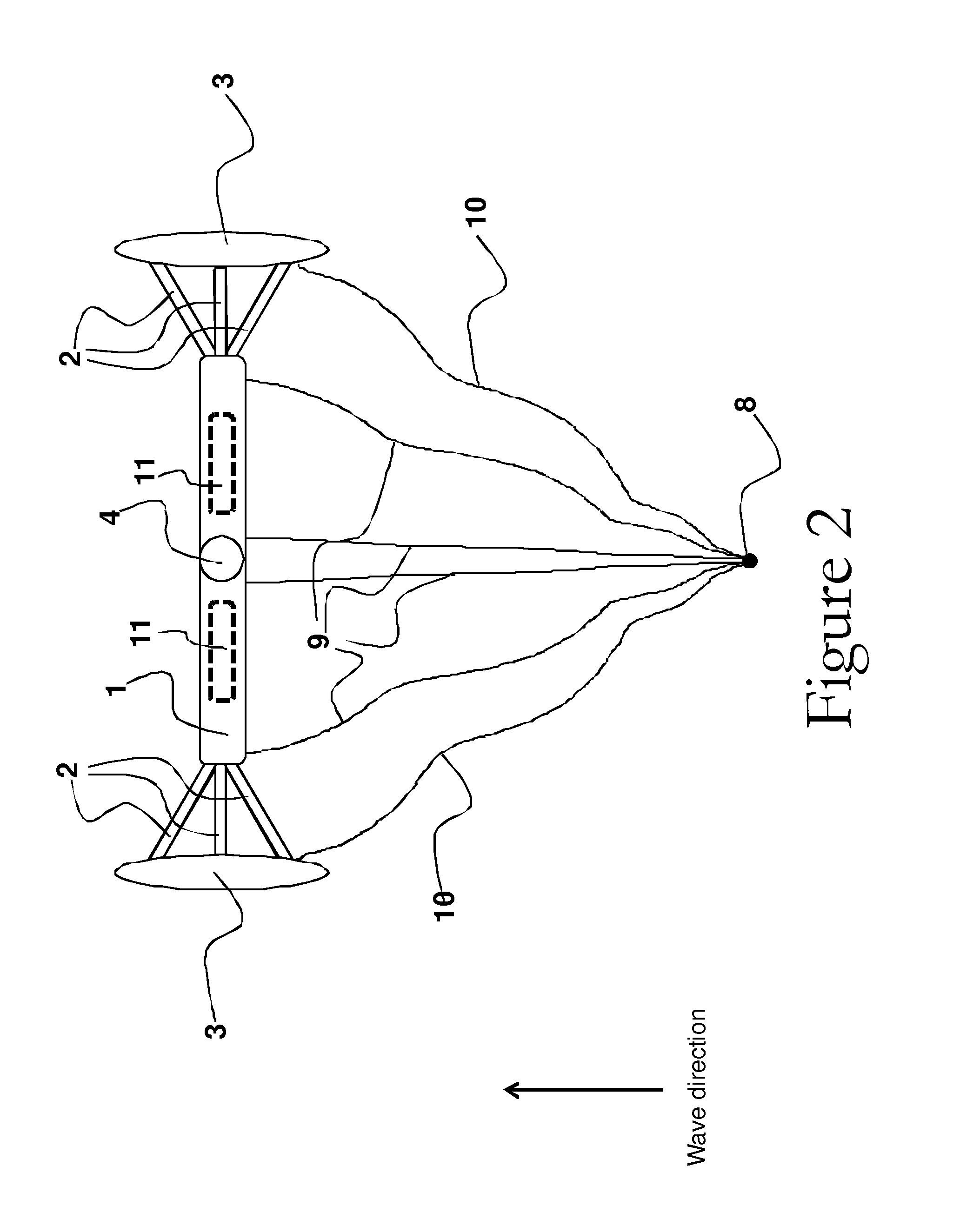Modular submergible breakwater for lowering water wave kinetic energy especially during storms or rough waters
a technology of submerged breakwaters and modules, applied in marine site engineering, construction, groynes, etc., to achieve the effect of removing any barrier to navigation, and lowering the kinetic energy of water waves
- Summary
- Abstract
- Description
- Claims
- Application Information
AI Technical Summary
Benefits of technology
Problems solved by technology
Method used
Image
Examples
first embodiment
[0072]FIGS. 3 and 4 show general side views of the modular breakwater of the present invention in the floating position with the breakwater Venetian-like slats in the raised position. In FIG. 3, the breakwater device is floating over the wave crest and the anchor lines 9 and 10 are in a taut stage. In FIG. 4, the breakwater device is floating over the wave trough and the anchor lines 9 and 10 are in a slack stage. Notice the different shape of the main float 3 and stabilizing float 4. Main floats 3 are designed to make the breakwater float in a catamaran manner and they can be design in any shape that can accomplish that purpose. The stabilizing float 4 can also be designed in any shape as to accomplish the purpose of stabilizing the breakwater (i.e., keeping the main frame 1 in horizontal position when sinking it to or raising it from the seafloor). By filling main float 3 with seawater first, and then float 4, through a system that is described in connection with FIGS. 8 and 9, th...
second embodiment
[0082]FIG. 16 is a general front view of the modular breakwater of the present invention in the floating position with the breakwater Venetian-like slats 5 in the raised position where the raising or lowering of the slats is performed by a mechanism 17. In this embodiment, the breakwater device will always be afloat, so there is no need for an air filling system described in FIGS. 8 and 9, nor the need for a stabilizing float 4. Main floats 3 may not need the holes 3a in the lowest position.
[0083]FIG. 17 is a general front view of the second embodiment of the modular breakwater of the present invention in the floating position with the breakwater Venetian-like slats 5 in the lowered position where the raising or lowering of the slats is performed by a mechanism 17.
third embodiment
[0084]FIG. 18 is a general front view of the modular breakwater of the present invention in the floating position with the breakwater Venetian-like slats 5 in the raised position, without any slats raising or lowering mechanism 17. In this embodiment, the breakwater device will always be afloat, so there is no need for an air filling system described in FIGS. 8 and 9, nor the need for a stabilizing float 4. Main floats 3 may not need the holes 3a in the lowest position. The Venetian-like slats 5 are shown in their raised position with ropes, belts or equivalent elements 7.
[0085]FIG. 19 is a general front view of the third embodiment of the modular breakwater of the present invention in the floating position with the breakwater Venetian-like slats 5 in the lowered position. Notice that, once the ropes, belts or equivalent elements 7 are cut or removed, the Venetian-like slats 5 fall into their lowered position due to the force of gravity.
PUM
 Login to View More
Login to View More Abstract
Description
Claims
Application Information
 Login to View More
Login to View More - R&D
- Intellectual Property
- Life Sciences
- Materials
- Tech Scout
- Unparalleled Data Quality
- Higher Quality Content
- 60% Fewer Hallucinations
Browse by: Latest US Patents, China's latest patents, Technical Efficacy Thesaurus, Application Domain, Technology Topic, Popular Technical Reports.
© 2025 PatSnap. All rights reserved.Legal|Privacy policy|Modern Slavery Act Transparency Statement|Sitemap|About US| Contact US: help@patsnap.com



